-
 Bitcoin
Bitcoin $117600
0.25% -
 Ethereum
Ethereum $4424
0.10% -
 XRP
XRP $3.101
0.50% -
 Tether USDt
Tether USDt $1.001
-0.01% -
 BNB
BNB $836.2
1.26% -
 Solana
Solana $188.8
2.11% -
 USDC
USDC $1.000
0.01% -
 Dogecoin
Dogecoin $0.2301
0.57% -
 TRON
TRON $0.3485
-1.00% -
 Cardano
Cardano $0.9209
-1.34% -
 Hyperliquid
Hyperliquid $46.72
-1.19% -
 Chainlink
Chainlink $22.62
4.84% -
 Stellar
Stellar $0.4275
-0.38% -
 Sui
Sui $3.761
1.91% -
 Bitcoin Cash
Bitcoin Cash $586.7
-0.25% -
 Ethena USDe
Ethena USDe $1.001
0.01% -
 Hedera
Hedera $0.2510
2.06% -
 Avalanche
Avalanche $24.21
2.22% -
 Litecoin
Litecoin $119.7
1.07% -
 Toncoin
Toncoin $3.450
1.06% -
 UNUS SED LEO
UNUS SED LEO $9.411
-0.93% -
 Shiba Inu
Shiba Inu $0.00001298
1.20% -
 Uniswap
Uniswap $10.98
3.25% -
 Polkadot
Polkadot $3.961
2.16% -
 Dai
Dai $1.000
0.00% -
 Bitget Token
Bitget Token $4.642
0.95% -
 Cronos
Cronos $0.1514
0.57% -
 Ethena
Ethena $0.7290
3.78% -
 Monero
Monero $254.1
7.69% -
 Pepe
Pepe $0.00001102
2.47%
How does token economics motivate users? The relationship between behavioral models and community growth
Token economics uses incentives like staking rewards and airdrops to motivate users, fostering community growth and ensuring project sustainability.
May 16, 2025 at 02:00 am
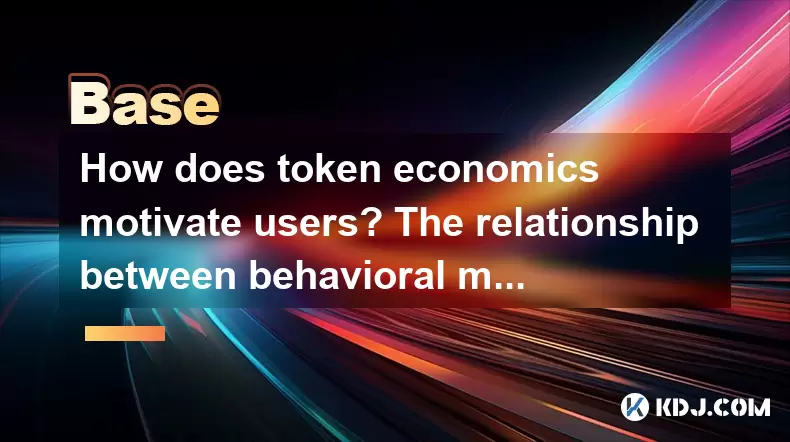
Token economics, often referred to as tokenomics, is a critical component of any cryptocurrency project. It involves the design of the token's supply, distribution, and utility within its ecosystem. The primary goal of token economics is to create a system that incentivizes users to participate and contribute to the growth and sustainability of the project. In this article, we will explore how token economics motivates users and the relationship between behavioral models and community growth.
The Role of Incentives in Token Economics
Incentives are at the heart of token economics. They are designed to encourage specific behaviors that align with the project's goals. For example, a project might offer rewards for users who stake their tokens, contributing to network security, or for those who actively participate in governance, ensuring the project evolves in line with community interests.
To understand how incentives motivate users, consider a project that offers a token reward for each transaction processed on its network. This encourages users to use the platform more frequently, increasing the network's activity and, in turn, its value. The promise of earning more tokens can drive users to engage more deeply with the project, fostering a sense of ownership and commitment.
Token Distribution and User Motivation
The way tokens are distributed can significantly impact user motivation. Airdrops, for instance, are a popular method where tokens are distributed for free to early adopters or active community members. This not only rewards early supporters but also encourages them to stay engaged and promote the project to others.
Another approach is initial coin offerings (ICOs) or initial decentralized exchange offerings (IDOs), where tokens are sold to raise funds. Participants in these events are often motivated by the potential for high returns, which can lead to increased interest and investment in the project. However, the success of these methods depends on the perceived value and utility of the tokens.
Utility and Perceived Value
The utility of a token is crucial in motivating users. A token that offers tangible benefits, such as access to exclusive services or discounts, can drive user engagement. For instance, a token that can be used to pay for transaction fees on a blockchain network encourages users to hold and use the token, thereby increasing its demand and value.
Perceived value also plays a significant role. If users believe that the token will increase in value over time, they are more likely to hold onto it and participate in the ecosystem. This belief can be fostered through clear communication about the project's roadmap, potential use cases, and partnerships.
Behavioral Models and Community Growth
Behavioral models are frameworks that help understand and predict user behavior within a token ecosystem. One such model is operant conditioning, which suggests that behaviors followed by rewards tend to be repeated. In the context of token economics, this means that users who are rewarded for certain actions (like staking or governance participation) are more likely to continue those actions, contributing to the project's growth.
Another relevant model is social proof, which suggests that people are more likely to engage in behaviors they see others performing. If a project can demonstrate strong community engagement and participation, it can attract more users who want to be part of a thriving ecosystem. This can create a positive feedback loop, where increased participation leads to more rewards, further motivating users.
Case Studies: Successful Token Economics
To illustrate how token economics can motivate users, let's look at a few examples:
Binance Coin (BNB): BNB offers users reduced trading fees on the Binance exchange. This utility encourages users to hold and use BNB, contributing to its high demand and value. Additionally, Binance burns a portion of BNB periodically, reducing supply and potentially increasing its value, which further motivates users to hold onto their tokens.
Decentraland (MANA): MANA is the native token of the Decentraland virtual world. Users can use MANA to buy virtual land, goods, and services within the platform. The utility of MANA in creating and trading virtual assets motivates users to engage with the ecosystem, driving community growth.
Compound (COMP): COMP is a governance token that allows users to vote on the development of the Compound protocol. Users who stake COMP can earn rewards, which motivates them to participate in governance and contribute to the platform's evolution.
Challenges and Considerations
While token economics can be a powerful tool for motivating users, it is not without challenges. Inflation can be a concern if the token supply is not managed properly. If the supply grows too quickly, the value of the token may decrease, reducing user motivation.
Regulatory compliance is another critical factor. Projects must ensure that their token economics models comply with relevant laws and regulations, which can vary significantly by jurisdiction. Failure to do so can lead to legal issues and undermine user trust.
Additionally, fairness and inclusivity are important considerations. Token economics should be designed to benefit all participants, not just early adopters or large investors. Ensuring that rewards are distributed equitably can help maintain a healthy and engaged community.
Implementing Effective Token Economics
To implement effective token economics, projects should follow a few key steps:
- Define clear goals: Understand what behaviors you want to encourage and how they align with the project's overall objectives.
- Design a balanced model: Ensure that the token supply, distribution, and utility are balanced to avoid inflation and maintain value.
- Engage the community: Communicate openly with the community about the token economics model and gather feedback to refine it.
- Monitor and adjust: Continuously monitor the impact of the token economics model and make adjustments as needed to ensure it remains effective.
Frequently Asked Questions
Q: How can token economics help in attracting new users to a project?
A: Token economics can attract new users by offering incentives such as airdrops, staking rewards, or access to exclusive features. These incentives can create a buzz around the project and draw in users who are interested in the potential benefits.
Q: What are some common pitfalls to avoid when designing token economics?
A: Common pitfalls include creating too much token supply leading to inflation, failing to comply with regulatory requirements, and designing a model that benefits only a small group of users. It's important to strike a balance and ensure fairness and inclusivity.
Q: How can a project measure the success of its token economics model?
A: Success can be measured by several metrics, including user engagement, transaction volume, token price stability, and community growth. Regularly analyzing these metrics can help a project understand the effectiveness of its token economics model and make necessary adjustments.
Q: Can token economics be used to encourage long-term participation?
A: Yes, token economics can be designed to encourage long-term participation by offering rewards for sustained engagement, such as staking rewards over time or governance participation. This can help build a loyal and committed user base.
Disclaimer:info@kdj.com
The information provided is not trading advice. kdj.com does not assume any responsibility for any investments made based on the information provided in this article. Cryptocurrencies are highly volatile and it is highly recommended that you invest with caution after thorough research!
If you believe that the content used on this website infringes your copyright, please contact us immediately (info@kdj.com) and we will delete it promptly.
- Kazakhstan's Crypto Leap: Bitcoin ETF and Central Asia's Digital Finance Future
- 2025-08-13 12:45:19
- BlockDAG Presale Blazes Past $371M: Fundraising Frenzy Fuels Crypto Sensation
- 2025-08-13 13:05:21
- Meme Coins: Chasing the 2025 Surge – Which Will Moonshot?
- 2025-08-13 10:25:23
- Bitcoin's Wild Ride: Rally, Pullback, and What's Next
- 2025-08-13 10:25:23
- Bitcoin, Bitmax, and Institutional Demand: A New Era of Crypto Investment
- 2025-08-13 10:45:12
- Solana, ROAM, and Airdrops: What's the Buzz in 2025?
- 2025-08-13 11:35:13
Related knowledge
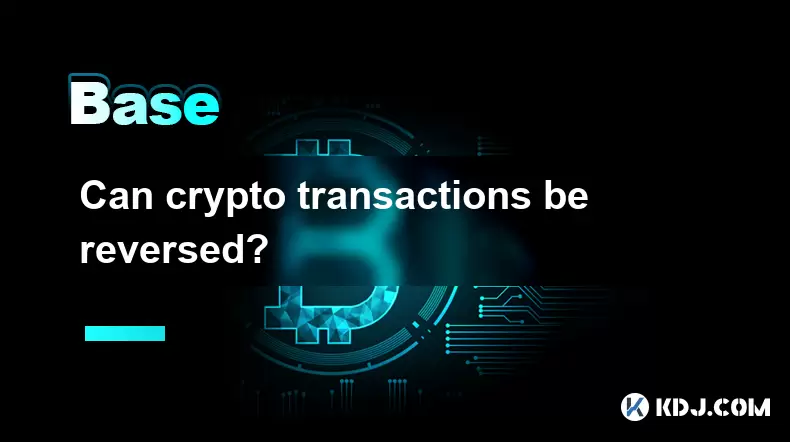
Can crypto transactions be reversed?
Aug 10,2025 at 01:35am
Understanding the Immutability of Blockchain TransactionsCryptocurrency transactions are built on blockchain technology, which is designed to be immut...
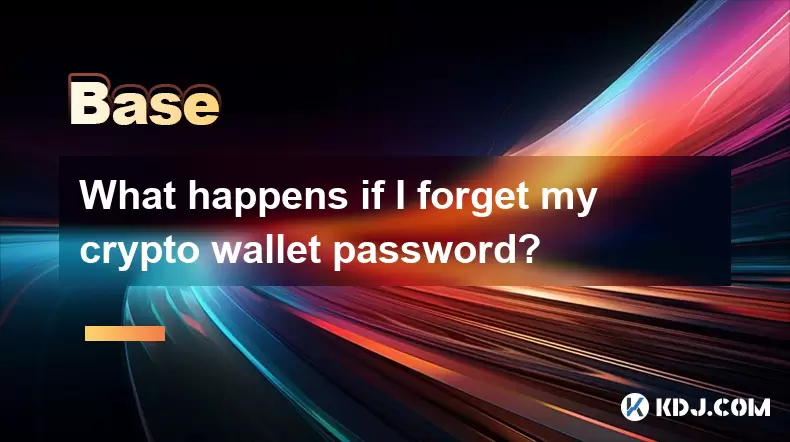
What happens if I forget my crypto wallet password?
Aug 09,2025 at 08:50am
Understanding the Role of a Crypto Wallet PasswordA crypto wallet password serves as a critical security layer that protects access to your digital as...
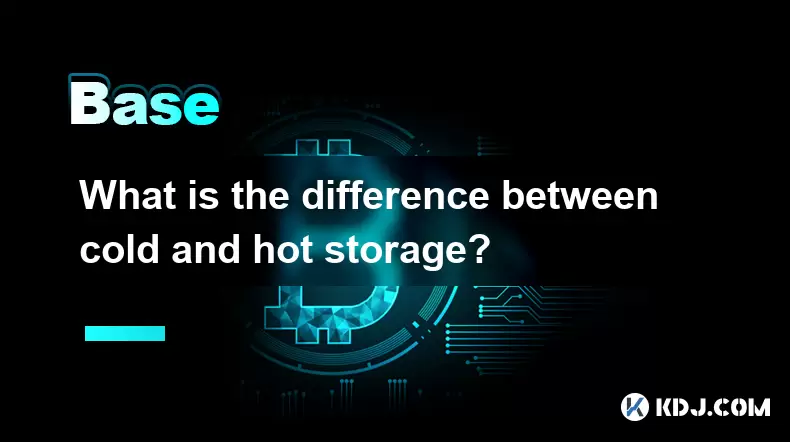
What is the difference between cold and hot storage?
Aug 12,2025 at 01:01am
Understanding Cold Storage in CryptocurrencyCold storage refers to offline methods of storing cryptocurrency private keys, ensuring they are not expos...
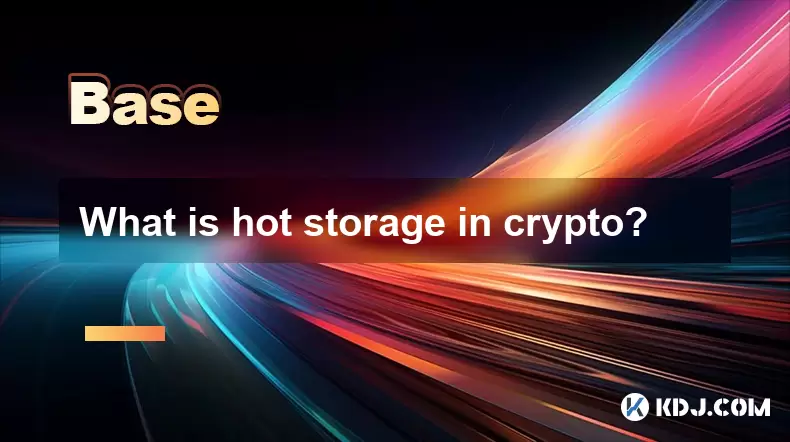
What is hot storage in crypto?
Aug 11,2025 at 07:08am
Understanding Hot Storage in CryptocurrencyHot storage refers to cryptocurrency wallets that are connected to the internet. Unlike cold storage soluti...

What is cold storage in crypto?
Aug 13,2025 at 11:35am
Understanding Cold Storage in CryptocurrencyCold storage in cryptocurrency refers to a method of storing digital assets offline, away from internet-co...

What is the best crypto portfolio tracker?
Aug 10,2025 at 05:08am
Understanding the Role of a Crypto Portfolio TrackerA crypto portfolio tracker is a digital tool designed to help investors monitor the performance of...

Can crypto transactions be reversed?
Aug 10,2025 at 01:35am
Understanding the Immutability of Blockchain TransactionsCryptocurrency transactions are built on blockchain technology, which is designed to be immut...

What happens if I forget my crypto wallet password?
Aug 09,2025 at 08:50am
Understanding the Role of a Crypto Wallet PasswordA crypto wallet password serves as a critical security layer that protects access to your digital as...

What is the difference between cold and hot storage?
Aug 12,2025 at 01:01am
Understanding Cold Storage in CryptocurrencyCold storage refers to offline methods of storing cryptocurrency private keys, ensuring they are not expos...

What is hot storage in crypto?
Aug 11,2025 at 07:08am
Understanding Hot Storage in CryptocurrencyHot storage refers to cryptocurrency wallets that are connected to the internet. Unlike cold storage soluti...

What is cold storage in crypto?
Aug 13,2025 at 11:35am
Understanding Cold Storage in CryptocurrencyCold storage in cryptocurrency refers to a method of storing digital assets offline, away from internet-co...

What is the best crypto portfolio tracker?
Aug 10,2025 at 05:08am
Understanding the Role of a Crypto Portfolio TrackerA crypto portfolio tracker is a digital tool designed to help investors monitor the performance of...
See all articles

























































































